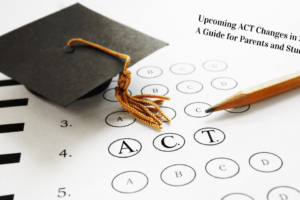5 Points To Help Parents Unravel RTI
 Response to Intervention (RTI) is a process for identifying student needs and providing support accordingly. It consists of screening procedures and a tiered system of interventions. Students move from one tier to another based on relative progress within an intervention program. Many schools have adopted RTI as a service delivery model for addressing the diverse needs of students. As schools roll out RTI, parents might have questions about exactly what it entails. Below are some points parents might find useful when navigating RTI.
Response to Intervention (RTI) is a process for identifying student needs and providing support accordingly. It consists of screening procedures and a tiered system of interventions. Students move from one tier to another based on relative progress within an intervention program. Many schools have adopted RTI as a service delivery model for addressing the diverse needs of students. As schools roll out RTI, parents might have questions about exactly what it entails. Below are some points parents might find useful when navigating RTI.
1. Universal Screening Comes First – Schools must base decisions about interventions on data. To gather data on student performance, schools will conduct a universal screening meant to tease out which students need additional support, along with what degree of support they needs. Every student is screened, with the possible exception of students already receiving intensive special education services. Instruments used for universal screenings vary from school to school. Most schools will screen in some way for reading, but screening for math and even writing is common as well. The screenings are typically done in the fall, with many schools conducting additional screenings in the winter and spring. From screening results, schools plan for specific interventions.
2. RTI Is A Tiered System – RTI is broken into three tiers. At the first tier is high-quality instruction delivered by qualified staff. This is what all students are expected to receive. All students are thought to begin in the first tier, which is where universal screenings are conducted. Those students identified through screenings as being at risk will receive some form of supplemental instruction in the regular classroom. Much of this will take the form of differentiation based on individual needs. First tier interventions largely are subtle adjustments made by classroom teachers.
At the second tier, students who don’t show progress after several weeks of first tier interventions will receive some form of targeted group interventions. These often happen in the regular education classroom as well, just in specific groupings of students with similar needs. Sometimes second tier interventions will happen in separate classrooms and will be delivered by a staff member like a reading specialist. These second tier interventions tend to last up to a marking period.
The third tier is reserved for students not making progress at the second tier. Interventions at this tier are individualized for students and might include one-to-one instruction with a specialist or tutor. If students fail to show progress at the third tier, a referral for a special education evaluation often will follow. Tiers have fluidity, though. Progress at a tier typically allows a student to move back to the preceding tier. The goal is to keep as many students as possible in the first tier, moving students back to this tier if they respond positively to interventions.
3. Interventions Are Research-Based – Any interventions used in RTI are to be research-based. This means the interventions have been systematically scrutinized through impartial studies to determine their overall effectiveness. Rather than relying on anyone’s intuition, schools select RTI methodology based on what is proven to work. No one set of interventions applies to all needs, nor do schools all use the same interventions. Schools use what works best in a given context with specific students.
4. RTI Isn’t A Commercial Product – RTI is a set of ideas rather than a commercially designed tool. No company or agency of the government owns RTI. Schools often select specific commercial products for delivering RTI. Many interventions are commercial products, but the whole of RTI is not something anyone can license.
5. RTI Isn’t A Replacement For Special Education – Using RTI before jumping to a special education evaluation is prudent. For needs that surface gradually over the course of instruction, RTI makes sense as an attempt to address delayed progress before a notable deficit develops. RTI shouldn’t continue as a replacement for special education, though. Some students will demonstrate need beyond what RTI can address long before interventions begin. Such students tend to be identified early and will skip RTI tiers. Others who enter the second and third tiers of RTI but fail to show progress shouldn’t remain in RTI indefinitely. Special education evaluations should commence. If through an evaluation a student is found ineligible for special education services, some different battery of interventions should be available rather than whatever the student had been doing previously in RTI. Students with IEPs can benefit from many of the interventions used in RTI, but RTI shouldn’t replace special educations for students with more intense needs.
Schools should make parents aware of any RTI processes being used. Individual student progress within RTI should be available to parents as well. The points above are general guidelines for what to expect out of RTI. Each school will have its own policies, which parents should know. RTI can be a highly effective system for supporting students. Parents just need to understand and be part of this system.
Written by Jeff Hartman



